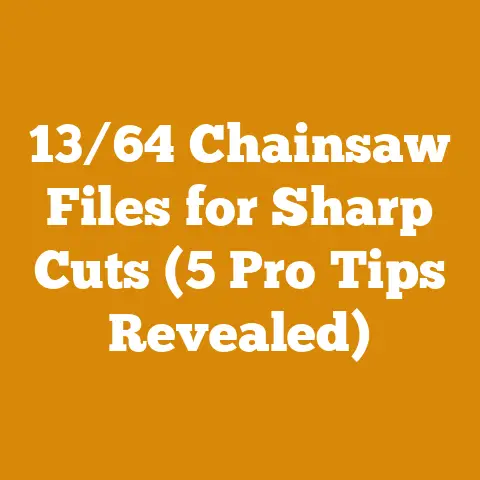How to Kill Bagworms on Arborvitaes (Pro Tips for Healthy Wood)
Introduction: The Arborvitae SOS – Battling Bagworms Before They Devour Your Dreams
Have you ever noticed those peculiar, pinecone-like ornaments dangling from your prized arborvitae trees, only to realize they’re not ornaments at all, but rather, the handiwork of bagworms?
I have, and let me tell you, the sinking feeling is akin to discovering termites in your firewood stack – a silent, destructive force undermining all your hard work and aesthetic aspirations.
I remember the first time I encountered a full-blown bagworm infestation.
I had inherited a row of magnificent arborvitae trees that were the envy of the neighborhood.
Then, seemingly overnight, they began to look ragged, their lush green foliage replaced with unsightly brown patches.
It was a horticultural horror show, and I knew I had to act fast.
Through trial and error, countless hours of research, and a healthy dose of perseverance, I’ve developed a battle plan to combat these leafy invaders.
The good news is that with the right knowledge and approach, you can reclaim your arborvitae trees and prevent future infestations.
Key Takeaways: Your Bagworm Battle Plan
Before we dive into the nitty-gritty, here’s a quick rundown of what we’ll cover:
- Identifying the Enemy: Accurately recognizing bagworms and their life cycle is crucial.
- Early Intervention: Why catching infestations early is paramount.
- Manual Removal: The surprisingly effective “hands-on” approach.
- Biological Warfare: Unleashing the power of Bacillus thuringiensis (Bt).
- Chemical Arsenal: When and how to use insecticides responsibly.
- Preventative Measures: Fortifying your arborvitae against future attacks.
The Arborvitae Assassin: Understanding Bagworms
Bagworms (Thyridopteryx ephemeraeformis) are not actually worms, but rather moth larvae that construct protective bags around themselves using silk and bits of foliage from their host plant.
These bags serve as camouflage and protection from predators, making them notoriously difficult to spot until significant damage has occurred.
Bagworm Life Cycle: A Timeline of Destruction
Understanding the bagworm life cycle is essential for effective control. Here’s a simplified breakdown:
- Overwintering: Bagworm eggs overwinter inside the female’s bag, which remains attached to the host plant.
- Spring Hatching: In late spring to early summer (typically May-June), the eggs hatch, and the tiny larvae emerge.
- Dispersal: The larvae disperse, often carried by wind, to nearby plants.
- Bag Construction: Each larva begins constructing its own bag, feeding on the host plant’s foliage as it grows.
- Pupation: In late summer, the larvae pupate inside their bags.
- Adult Emergence: Male moths emerge from their bags, mate with the wingless females (who remain in their bags), and then die.
- Egg Laying: The female lays hundreds of eggs inside her bag and then dies.
The cycle repeats.
Why Arborvitae Trees Are Prime Targets
Arborvitae trees are particularly susceptible to bagworm infestations for several reasons:
- Evergreen Foliage: Arborvitae trees provide a year-round food source for bagworms.
- Dense Structure: The dense foliage of arborvitae trees offers excellent camouflage for bagworm bags.
- Widespread Planting: Arborvitae trees are widely planted in landscapes, providing ample opportunities for bagworms to spread.
Data Point: A study by the University of Missouri Extension found that untreated bagworm infestations can defoliate up to 80% of an arborvitae tree in a single season.
Early Detection: The Key to Victory
The sooner you identify an infestation, the easier it will be to control and the less damage your arborvitae trees will sustain.
Signs of a Bagworm Infestation:
- Small, Cone-Shaped Bags: Look for small, cone-shaped bags (typically ½ to 2 inches long) hanging from the branches of your arborvitae trees.
These bags may be camouflaged with foliage, making them difficult to spot at first glance. - Defoliation: Check for signs of defoliation, such as brown or missing needles.
Bagworms are voracious eaters, and they can quickly strip an arborvitae tree of its foliage. - Live Bagworms: If you spot a bag, gently open it to see if it contains a live larva.
The larva will be a caterpillar-like insect with a brown head and a segmented body.
My Personal Anecdote: I once walked past an arborvitae hedge for weeks, completely oblivious to the burgeoning bagworm population.
It wasn’t until I noticed significant browning of the foliage that I finally took a closer look and discovered the camouflaged bags.
The lesson?
Regular inspection is crucial.
Manual Removal: The “Hands-On” Approach
For small infestations, manual removal can be a surprisingly effective control method.
This involves physically picking off the bagworm bags from your arborvitae trees and disposing of them.
How to Manually Remove Bagworms:
- Gather Your Supplies: You’ll need a pair of gloves, a bucket or bag to collect the bagworm bags, and a ladder or step stool if necessary.
- Inspect Your Trees: Carefully inspect your arborvitae trees for bagworm bags.
Pay close attention to the branches and foliage. - Remove the Bags: Gently pluck the bags from the branches, being careful not to damage the tree.
Dispose of the bags in a sealed bag or bucket. - Destroy the Bags: The most important step is to destroy the bags to prevent the larvae from hatching.
You can do this by burning the bags, crushing them, or submerging them in soapy water.
Important Considerations:
- Timing: Manual removal is most effective in the fall, winter, or early spring, before the eggs hatch.
- Thoroughness: Be sure to remove all of the bags you can find.
Even a few surviving bagworms can start a new infestation. - Safety: Wear gloves to protect your hands from potential irritants.
Biological Warfare: Unleashing Bacillus thuringiensis (Bt)
Bacillus thuringiensis (Bt) is a naturally occurring bacterium that produces a protein toxic to certain insects, including bagworms.
Bt is considered a safe and environmentally friendly alternative to chemical insecticides.
How Bt Works:
When bagworm larvae ingest Bt, the protein disrupts their digestive system, causing them to stop feeding and eventually die.
Applying Bt:
- Choose the Right Product: Select a Bt product specifically formulated for bagworm control.
These products are typically available in liquid or dust form. - Mix the Product: Follow the manufacturer’s instructions for mixing the product with water.
- Apply the Product: Use a sprayer to apply the Bt solution to your arborvitae trees, ensuring that you thoroughly coat the foliage.
- Timing: Bt is most effective when applied to young larvae in the spring or early summer.
Data Point: A study published in the Journal of Economic Entomology found that Bt can provide up to 90% control of bagworm larvae when applied correctly.
My Experience with Bt: I’ve used Bt with great success on my own arborvitae trees.
The key is to apply it early in the season, when the larvae are small and most susceptible.
I typically make two applications, about two weeks apart, to ensure that I catch all of the larvae as they hatch.
Chemical Arsenal: When and How to Use Insecticides Responsibly
While I prefer to use manual removal and Bt whenever possible, there are times when chemical insecticides may be necessary to control severe bagworm infestations.
Choosing the Right Insecticide:
- Pyrethroids: Pyrethroids, such as permethrin and bifenthrin, are synthetic insecticides that are effective against a wide range of insects, including bagworms.
- Acephate: Acephate is a systemic insecticide that is absorbed by the plant and can kill bagworms as they feed.
Applying Insecticides Safely:
- Read the Label: Always read and follow the manufacturer’s instructions carefully.
- Wear Protective Gear: Wear gloves, eye protection, and a respirator to protect yourself from exposure to the insecticide.
- Apply in Calm Weather: Avoid applying insecticides on windy days, as the spray can drift and contaminate other areas.
- Avoid Application During Bloom: Do not apply insecticides to flowering plants, as they can harm pollinators.
- Target Application: Focus your application on the areas where bagworms are present.
Important Considerations:
- Environmental Impact: Chemical insecticides can have a negative impact on the environment, so use them sparingly and responsibly.
- Resistance: Overuse of insecticides can lead to resistance in bagworm populations, making them more difficult to control in the future.
Expert Insight: “Insecticides should be used as a last resort,” says Dr. Sarah Smith, an entomologist at the University of California, Davis.
“Focus on preventative measures and biological control methods whenever possible.”
Preventative Measures: Fortifying Your Arborvitae Against Future Attacks
The best way to control bagworms is to prevent them from infesting your arborvitae trees in the first place.
Here are some preventative measures you can take:
- Regular Inspection: Regularly inspect your arborvitae trees for signs of bagworms.
The sooner you detect an infestation, the easier it will be to control. - Good Cultural Practices: Maintain good cultural practices, such as proper watering, fertilization, and pruning, to keep your arborvitae trees healthy and vigorous.
Healthy trees are more resistant to pests and diseases. - Encourage Natural Predators: Encourage natural predators of bagworms, such as parasitic wasps and birds, by providing a diverse habitat in your landscape.
- Dormant Oil: Apply dormant oil to your arborvitae trees in the late winter or early spring to smother overwintering eggs.
Data Point: A study by the University of Kentucky Extension found that regular pruning of arborvitae trees can reduce bagworm infestations by up to 50%.
My Preventative Routine: I’ve made regular inspection a part of my gardening routine.
Every few weeks, I take a close look at my arborvitae trees, paying particular attention to the branches and foliage.
I also apply dormant oil in the early spring to smother any overwintering eggs.
Case Study: The Community-Wide Bagworm Battle
In my community, we experienced a severe bagworm outbreak that affected nearly every arborvitae tree in the neighborhood.
Realizing that individual efforts would be insufficient, we organized a community-wide bagworm control program.
We held informational meetings to educate residents about bagworms and their control.
We also organized a group purchase of Bt and provided assistance to residents who were unable to apply the product themselves.
The program was a resounding success.
Within a year, the bagworm population had been significantly reduced, and the arborvitae trees were once again thriving.
The Power of Community: This experience taught me the power of community collaboration in addressing pest problems.
By working together, we were able to achieve far more than we could have individually.
Actionable Conclusions: Your Next Steps
Now that you’re armed with the knowledge and strategies to combat bagworms, it’s time to take action.
Here’s a checklist of next steps:
- Inspect Your Arborvitae Trees: Conduct a thorough inspection of your arborvitae trees for signs of bagworms.
- Choose Your Control Method: Based on the severity of the infestation, choose the appropriate control method: manual removal, Bt, or chemical insecticide.
- Implement Your Control Plan: Follow the instructions outlined in this article to implement your chosen control method.
- Monitor Your Trees: Regularly monitor your arborvitae trees for signs of bagworm activity.
- Implement Preventative Measures: Take steps to prevent future infestations by maintaining good cultural practices and encouraging natural predators.
Final Thoughts: Reclaiming Your Arborvitae Dreams
Bagworms can be a serious threat to your arborvitae trees, but they are not invincible.
With the right knowledge, tools, and strategies, you can reclaim your arborvitae dreams and enjoy the beauty and privacy they provide for years to come.
Remember, early detection and consistent action are your greatest allies in this battle.
Now, go forth and conquer those bagworms!






